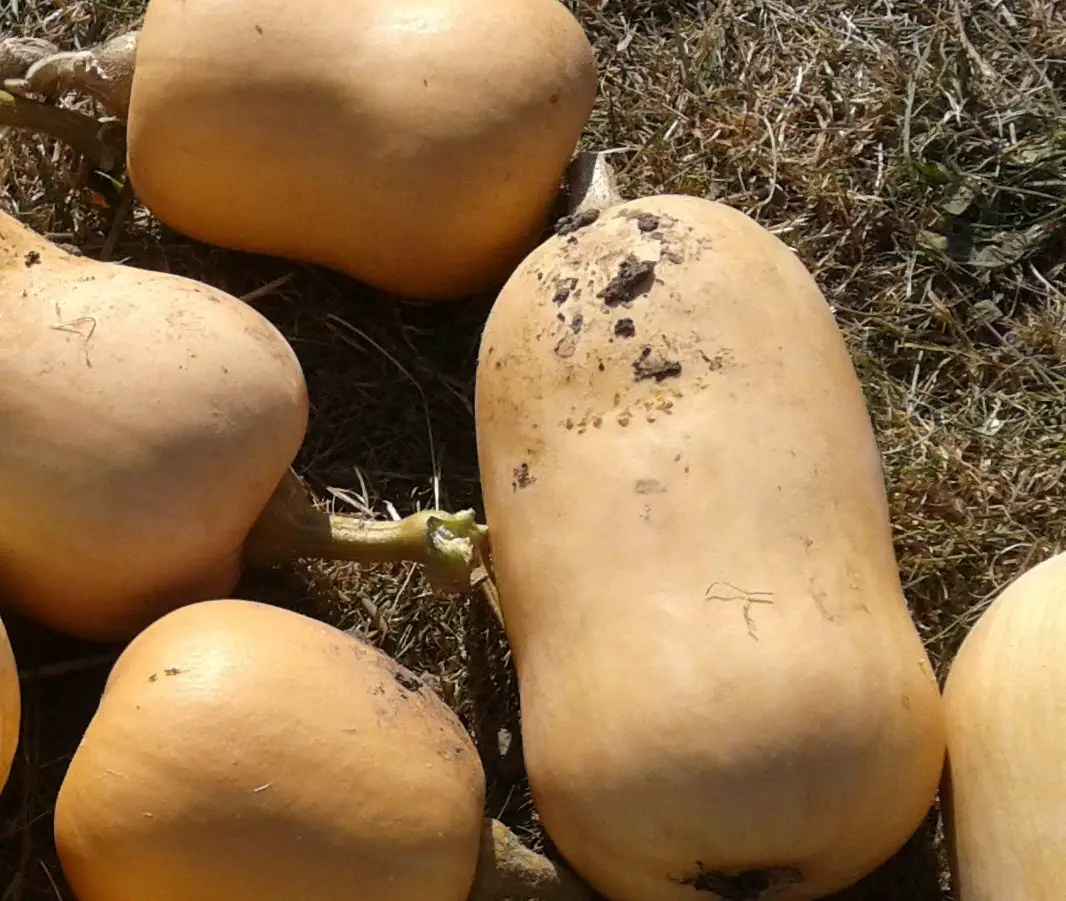Last Updated on March 15, 2022 by Real Men Sow
When I took my allotment 6 years ago, very few plots gave space to squashes, but recently I’ve seen more and more people trying these brilliant vegetables.
Is It Hard To Grow Different Types of Squash
Squashes have always been one of my favourite things to grow so I can absolutely see why. Not only are they tasty, but squashes are interesting to grow, expensive in the shops, and incredibly flexible in the kitchen.
If you’ve never grown squashes before, and fancy trying a few in 2014, here are 5 varieties I’ve enjoyed growing, and an exciting squash I’m trying for the first time.
5 Types of Squash that You Should Try to Grow
Butternut
This the most commonly grown squash, and a great place to start. These are the type of squash you’re likely to find in the local supermarket, but at around a quid a pop for a small-average sized squash, you’d be well rewarded by growing your own.
I’ve used butternuts in a wide range of recipes, including curries, risottos, pies, soups, and even cake. They’re also brill mashed, roasted, or chipped.
Sweet Dumpling
These mini squashes are the perfect size for cooking whole and stuffing. They store into winter but can be harvested and eaten as early as July.
The skin is a pale whitey-yellow, but the striking green stripes really make these squashes stand out on your plot.
The fruits grow fast in the warm weather, so keep an eye on them!
Crown Prince
Crown Prince is the king of the storers. I’ve grown Crown Prince which has kept until the following summer, simply by keeping the harvest in my dining room. An average fruit will easily grow to weigh 2-3kg, and the blue skin gives a beautiful contrast to the lurid orange flesh, which is nuttier in flavour than other squashes.
Patty Pan Scallop
I’ve never had as many questions from neighbouring plotholders about a crop as I did when I grew Patty Pans. Their distinctive shape reminds me of flying saucers.
Patty Pans can be eaten either as baby squash or when they reach their mature size of roughly 6-8 inches across.
Thompson and Morgan offer a mixed variety, which produces white, green, and yellow squashes from the same plants.
Golden Hubbard
The teardrop-shaped Golden Hubbard is a heritage variety, and another with a sweet flavour. The skin is a deep orange, but once sliced open the squash reveals a golden yellow flesh.
As the Crown Prince, the average weight is good and the fruits are great indoor storers.
Turk’s Turban
I’m trying Turk’s Turban for the first time this year, and if you’re on the lookout for a head-turner, then this could be just the job.
The fruits look more ornamental than edible, but I’m told the flesh has a lovely, sweet flavour, as well as being an excellent storer.
And they just look awesome.


That’s pretty impressive. I did try butternut this year, but got very poor results. I had decided not to bother but maybe I will now I read this.
Hey Dan, I’d definitely give them another go. From a frugality point of view they’re brilliant.
I use this method when planting, which I think helps a lot: https://www.realmensow.co.uk/mums-super-squash-planting-method/
I was given a spaghetti squash seed last year. I didn’t realise until too late that I might need to hand pollinate so only got one fruit so ended up with a small harvest of large fruit. BUT what a wonder ! The most flavoursome spaghetti we’ve ever had. Will definitely be growing again this year.
I’d add Thelma Sanders to your ‘must-have’ list of squashes, plus Potimarron/Uchiki Kuri – they have amazing flavour and are really good keepers.
I agree about Crown prince – they’re a great squash. I thought I’d give Turks Turban a go myself this year. Going to try a couple of italian varieties from franchi seeds too. Then enjoy them with this gnocchi http://spadeforkspoon.wordpress.com/2013/11/12/gnocchi/ as well as other dishes.
I made a tripod for my uchiki kuri last year- just canes and string- great space saver. I was disappointed with the quantity of flesh from them, though – I’ll concentrate on butternut and crown prince next (this) season.